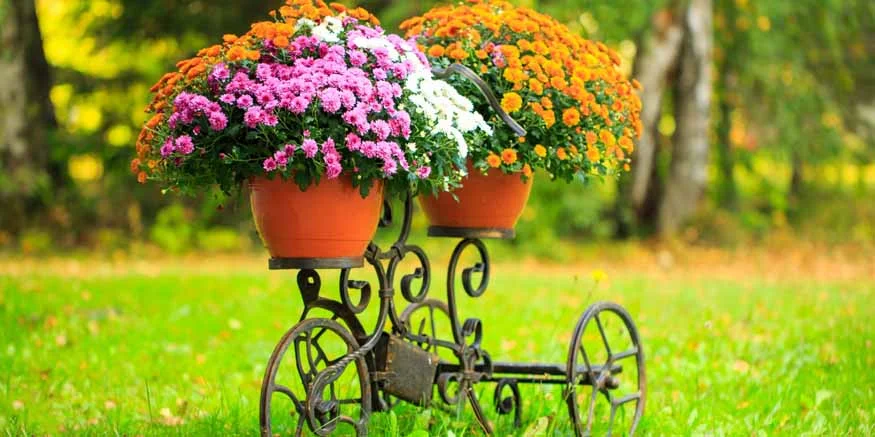Mathematics is a powerful tool for organising and planning any space, including gardens. The concept of area plays a crucial role in laying out flower beds and vegetable plots, helping gardeners utilise their space efficiently. Calculating and dividing the available area ensures every plant has the right conditions to thrive while maximising the garden’s aesthetic appeal and productivity. In this blog, we explore how area calculations can be used to plan your garden efficiently, with clear examples to help you apply these concepts in practice.
The Significance of Area in Garden Planning
Area, the surface covered by a shape, is essential in determining how much space is available for planting. Whether your garden is small or expansive, calculating the area allows you to allocate the right amount of space to each plant, making the most of the available land.
- Optimising Plant Spacing
- Maximising Space in Smaller Gardens
Each plant requires a specific amount of space to grow properly. When plants are placed too close together, they compete for sunlight, water, and nutrients, leading to stunted growth. Calculating the area ensures that every plant has enough space to thrive.
In smaller gardens, efficient use of space is particularly important. By dividing the total area into well-planned sections, you can grow more plants without overcrowding them.
Calculating the Area of Your Garden
Before organising your flower beds or vegetable plots, the first step is to measure and calculate the total area of your garden. This provides the foundation for dividing the space effectively.
- Measuring Rectangular Gardens
- Calculating the Area of Irregular Gardens
If your garden is rectangular or square, calculating the area is simple: multiply the length by the width. For example, if your garden is 4 metres long and 3 metres wide, the total area is 12 square metres. Once you know the area, you can start dividing it into smaller sections for different plants or features, like flower beds and paths.
If your garden has an irregular shape, you can still calculate the total area by breaking it into simpler shapes, such as rectangles, triangles, or circles. Calculate the area of each section and then add them together.
For example, if part of your garden is circular with a radius of 1.5 metres, the area of that section is approximately 7 square metres (using the formula A = πr²).
Dividing the Garden with Area Calculations
Once you’ve determined the total area of your garden, you can begin dividing it into smaller sections for different types of plants. This helps ensure that each plant gets the appropriate amount of space to grow.
- Allocating Space for Vegetables
- Creating Flower Beds Based on Area
Let’s say you have a vegetable plot with a total area of 8 square metres. You plan to grow lettuce and carrots. Since lettuce requires more space, you decide to allocate 5 square metres to lettuce and 3 square metres to carrots.
If each lettuce plant needs 1 square metre, you can plant five lettuce plants in the 5-square-metre section. Carrots, which need less space, can be planted closer together. If each carrot requires 0.25 square metres, you can plant 12 carrot plants in the remaining 3 square metres.
Suppose you want to design a flower bed in a section of your garden with an area of 9 square metres. You plan to grow roses, which need 1 square metre per plant, and marigolds, which need only 0.5 square metres. By calculating the area, you can allocate 6 square metres to the roses (6 rose plants) and 3 square metres to the marigolds (6 marigold plants).
Using Geometry to Organise Your Plants
Applying simple geometric shapes can help you organise your garden efficiently, whether it’s for vegetable plots or decorative flower beds. By using squares, rectangles, or circles, you can maximise the use of the available area while keeping the garden layout neat and easy to maintain.
- A rectangular grid is ideal for vegetable plots.
- Circular flower beds create an attractive design and can also make efficient use of space. To calculate the area of a circular bed, use the formula A = πr², where r is the radius.
Planning Paths, Walkways, and Shady Areas
Paths and walkways are essential for easy access to different sections of the garden. When designing your garden, you also need to calculate the area taken up by paths to ensure you aren’t sacrificing too much planting space.
- Allocating Space for Paths
To prevent paths from occupying too much space, calculate how much area they will cover. For example, if your garden is 50 square metres and you want paths to occupy no more than 10% of the total area, you would allocate 5 square metres to paths, leaving 45 square metres for planting.
Conclusion
Mathematics, particularly the concept of area, is an invaluable tool for planning and designing your garden. By calculating the total area and dividing it into organised sections, you can ensure that each plant has the space it needs to grow while making the most of the available space. Whether you’re designing a vegetable plot or a flower bed, using area calculations helps you optimise your garden efficiently.









